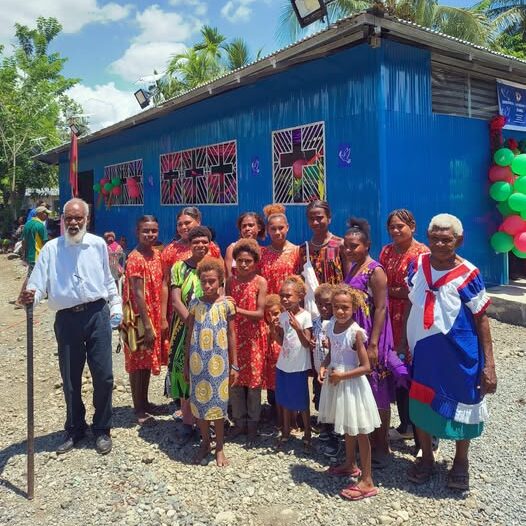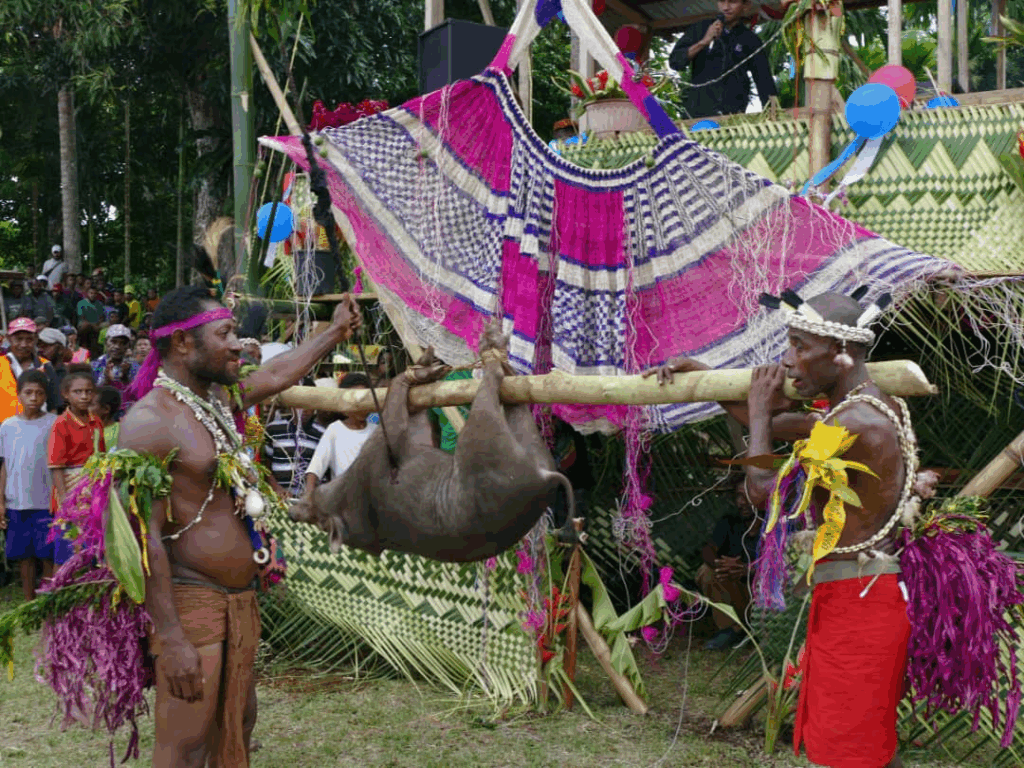THE STORY OF EMMANUEL LUTHERAN CONGREGATION IN LAE

In 1967, a major flood destroyed homes and belongings along the Bumbu River. Families from several clans – including Bore, Gutai, Tega, Soyawai, Yeni, Bossi and a young man named Deoga Morobe – moved inland from the riverbanks to rebuild their lives on higher ground among banana gardens and bushland.
Although life was hard, these families shared a strong desire to worship together. They built their first small church with bush materials: rough timber posts, simple planks, and coconut leaves for roofing. Rain often leaked through, but their faith kept them together.
Leadership for worship came from two elders, Maragam, from Markham, who led regular church services; and Pure Kano, originally from Wabezaira near the Morobe Patrol Post, who supported the congregation while also working for a local company.
A Growing Church Community
As the years passed, the congregation grew. When the rainy season made the bush church too uncomfortable, the elders carried plywood and timber from the old S.P.T. Timber sawmill on the other side of the Bumbu River to build a stronger shelter. For more than 30 years, this simple structure served as their church, marking their identity as part of the Zaka circuit and Morobe Patrol Post.
Members and pastors from neighbouring Suena, Zia, Yekora, Mawae and Binadere communities also joined them. The unity and shared faith of these groups strengthened the growing congregation.
A significant moment came in 1979 when Chief Doa Masani, a retired health worker, returned home and settled among his people in Bumbu. He started a small bus service to support his community and encouraged stronger participation in church life.
Building the First “Emmanuel” Church
By 1987 the congregation had expanded even more. Chief Doa, with support from his relatives and the skilled carpenter Suam Yeni, decided to build a new and proper church building using timber and roofing iron from the hardware shop.
The name Emmanuel was suggested by the late elder Numa Kokopo, who remembered the name from his work in Madang. The leaders agreed that “Emmanuel” – meaning God with us – was a fitting name for the church.
A New Generation Carries the Vision
As the old timber church aged and decayed, the community began to think about a more permanent building. Inspiration came from the guiding hand of Anutu and from the commitment of Mr David Masani, son of late Chief Doa.
In honour of his father and the elders who laid the foundations, David committed himself to building a modern steel-frame church for Emmanuel Lutheran Congregation. This new structure, completed in 2025 is an expression of their faith through fifty years, during Papua New Guinea’s own 50th Independence anniversary celebrations.
David says the new church is a gift of thanksgiving to God and a tribute to the memory of his father, the “old Jerusalem” he grew up knowing, and the pioneers who kept the faith alive.
The Opening of the Church in 2025
On 16 November 2025, the Emmanuel Lutheran Congregation within the Amoa Community officially opened its new church. Members, guests, and staff from the Evangelical Lutheran Church of Papua New Guinea attended to witness this important milestone.
The congregation is now hoping that a full-time pastor could be appointed to guide them in the years ahead.
This story is based on notes translated and compiled from the records of Emmanuel Lutheran Congregation Interim Secretary, Deoga Junior. The church opening will be covered in a second article.


